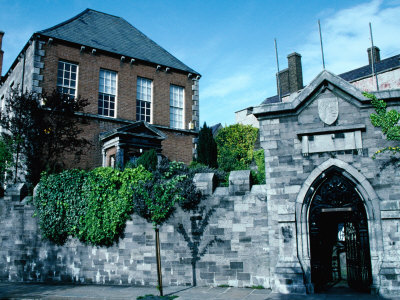James Joyce begins The Sisters, the opening story for the collection of his short novels titled Dubliners, with referring to a religious ritual in a following way:
‘If he was dead, I thought, I would see the reflection of candles on the darkened blind, for I knew that two candles must be set at the head of a corpse.’ (Dubliners by James Joyce, Penguin Popular Classics, 1996, p. 7)
Needless to say, Joyce is a famous Irish writer and Dubliners consists of stories all set in the capital city ofIreland, where he lived in the early twentieth century. Having said that, it must be interesting to make sure whether the ritual he described; two candles must be set at the head of a corpse, was/is a common practice in the Catholic society or rather a limited practice of the given geographical condition and/or time.
For referring to such rituals and customs, the most reliable source could be a book called Cæremoniale Episcoporum, which has been written and edited by the Roman Catholic Church since the sixteenth century. The book has been revised several times, notably ordered by the Popes such as Clement VIII in 1600, Innocent X in 1650, Benedict XIII in 1727 and Benedict XIV in 1752 respectively. Additionally, the decisive edition, regarding to the time of Joyce’s writing of the novel, was ‘published under the auspices of the Congregation of Sacred Ritesto’ (http://www.newadvent.org/cathen/03133a.htm) in 1886.
According to the online Catholic Encyclopaedia, the book contains the following sentence relating to the very question:‘The burning of more than one candle beside the body is not directly enjoined for all, but it is mentioned in the Cæremoniale in the case of a bishop and is of general observance’(http://www.newadvent.org/cathen/03133a.htm).
Although this does not give answers to the questions set above satisfactory, the limit it mentions for this particular custom to be applied is rather interesting because the readers of Joyce’s story soon learn that the person to be found dead is called Father Flynn. Taking this fact into the account, it could be recognised what Cæremoniale Episcoporum describes is applicable to the case of Father Flynn because of the following reasons:
(1) both refers to plural candles; ‘two candles’ in the former and ‘more than one candle’ in the latter, to be set alight at (2); ‘the head of a corpse’ in the former and ‘beside the body’ in the latter. And finally, the later limit the custom to be applied to ‘the case of a bishop’ whilst the latter formally addresses the deceased as ‘The Rev. James Flynn’ (Penguin Popular Classics, 1996, p. 10).
 |
| James Joyce |


